5.419. visible
| DESCRIPTION | LINKS |
- Origin
- Constraint
- Types
- Arguments
- Restrictions
- Purpose
Holds if and only if:
The difference between the end in time and the start in time of each object is equal to its duration in time.
Given a collection of potential observations places , where each observation place is specified by a dimension (i.e., an integer between 0 and ) and by a direction (i.e., an integer between 0 and 1), and given for each shifted box of a set of visible faces, enforce that at least one visible face of each shifted box associated with an object should be entirely visible from at least one observation place of at time as well as at time . This notion is defined in a more formal way in the Remark slot.
- Example
-
The five previous examples correspond respectively to parts (I), (II) of Figure 5.419.2, to parts (III) and (IV) of Figure 5.419.3, and to Figure 5.419.4. Before introducing these five examples Figure 5.419.1 first illustrates the notion of observations places and of visible faces.
Figure 5.419.1. Entirely visible faces (depicted by a thick line) of rectangles ①, ②, ③, ④, ⑤, ⑥ and ⑦ from the four observation places , , and (depicted by a small triangle)
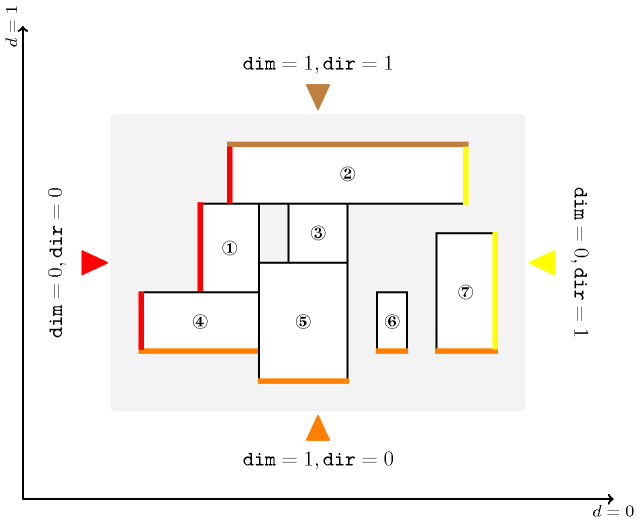
We first need to introduce a number of definitions in order to illustrate the notion of visibility.
Definition 1 Consider two distinct objects and of the constraint (i.e., ) as well as an observation place defined by the pair . The object is masked by the object according to the observation place if there exist two shifted boxes and respectively associated with and such that conditions A, B, C, D and E all hold:
(A) (i.e., the time intervals associated with and intersect).
(B) Discarding dimension , and intersect in all dimensions specified by (i.e., objects and are in vis-à-vis).
(C) If
then
else (i.e., in dimension , and are ordered in the wrong way according to direction ).
(D) (i.e., instants or are located within interval ; we consider also condition A.).
(E) The observation place occurs within the list of visible faces associated with the face attribute of the shifted box (i.e., the pair is a potentially visible face of ).
Definition 2 Consider an object of the collection as well as a possible observation place defined by the pair . The object is masked according to the observation place if and only if at least one of the following conditions holds:
No shifted box associated with has the pair as one of its potentially visible face.
The object is masked according to the possible observation place by another object .
Figures 5.419.2, 5.419.3, and 5.419.4 respectively illustrate Definition Definition 1 in the context of an observation place (depicted by a triangle) that is equal to the pair . Note that, in the context of Figure 5.419.4, as the parameter of the constraint only mentions dimension 0 (and not dimension 1), one object may be masked by another object even though the two objects do not intersect in any dimension: i.e., only their respective ordering in the dimension as well as their positions in time matter.
Figure 5.419.2. Illustration of Definition Definition 1: two examples (I) and (II) where an object is masked by an object according to dimensions and to the observation place because (A) and intersect in time, (B) and intersect in dimension 1, (C) and are not well ordered according to the observation place, (D) there exists an instant where if present (but not ) and (E) is a potentially visible face of .
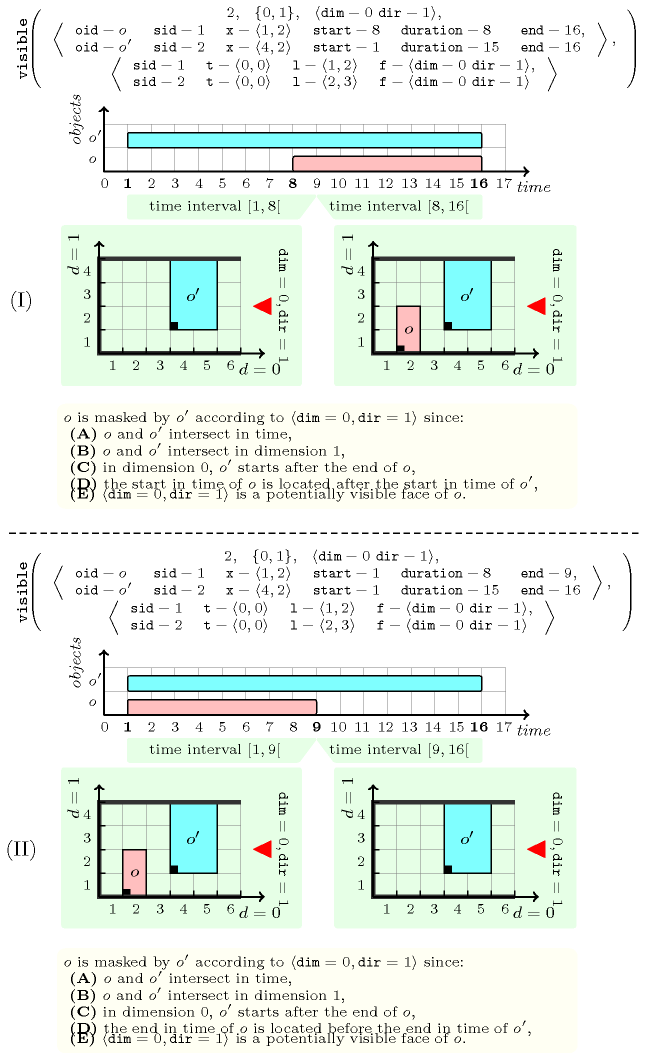
Figure 5.419.3. Illustration of Definition Definition 1: two examples (III) and (IV) where an object is not masked by an object according to the observation place .
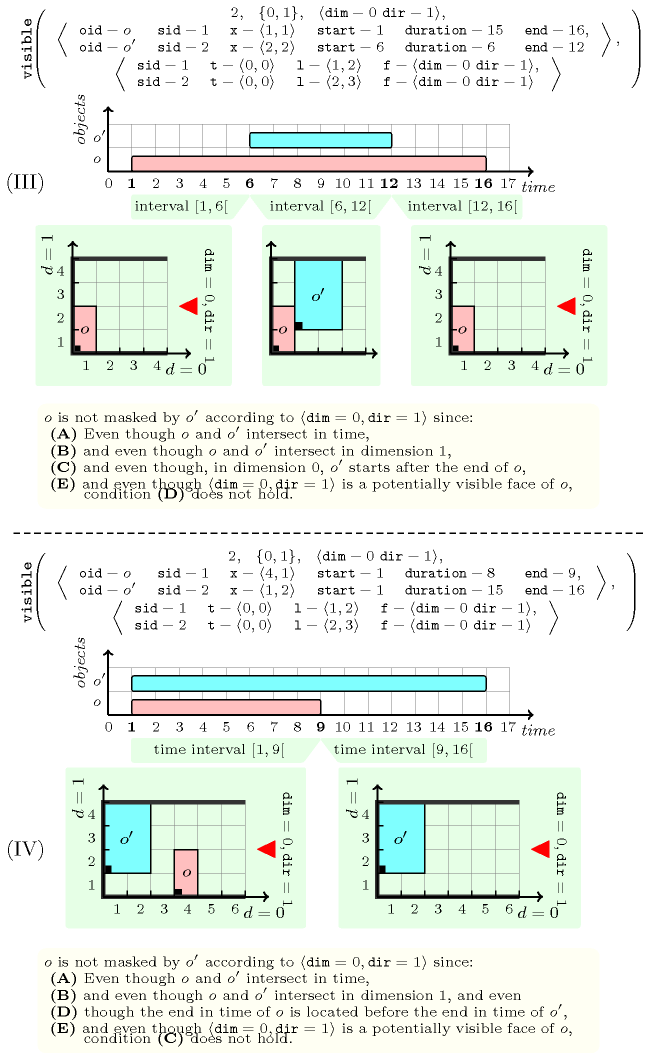
Figure 5.419.4. Illustration of Definition Definition 1: the case where an object is masked by an object according to dimension 0 and to the observation place because: (A) and intersect in time, (C) and are not well ordered according to the observation place and (D) there exists an instant where if present (but not ) and (E) is a potentially visible face of .
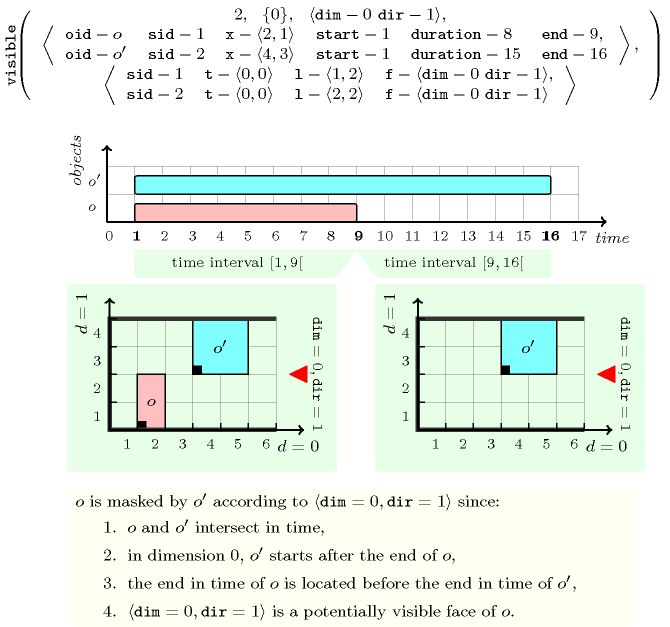
Definition 3 Consider an object of the collection as well as a possible observation place defined by the pair . The object is masked according to the observation place if and only if at least one of the following conditions holds:
No shifted box associated with has the pair as one of its potentially visible face.
The object is masked according to the possible observation place by another object .
Definition 4 An object of the collection constraint is masked according to a set of possible observation places if it is masked according to each observation place of .
We are now in position to define the constraint.
Definition 5 Given a constraint, the constraint holds if none of the objects of is masked according to the dimensions of and to the set of possible observation places defined by .
- Typical
- Symmetries
Items of are permutable.
Items of are permutable.
- Usage
We now give several typical concrete uses of the constraint, which all mention the as well as the constraints:
Figure 5.419.5 corresponds to a ship loading problem where containers are piled within a ship by a crane each time the ship visits a given harbour. In this context we have first to express the fact that a container can only be placed on top of an already placed container and second, that a container can only be taken away if no container is placed on top of it. These two conditions are expressed by a single constraint for which the parameter mentions all three dimensions of the placement space and the parameter mentions the pair as its unique observation place. In addition we also use a constraint for expressing non-overlapping.
Figure 5.419.5. Illustration of the ship loading problem
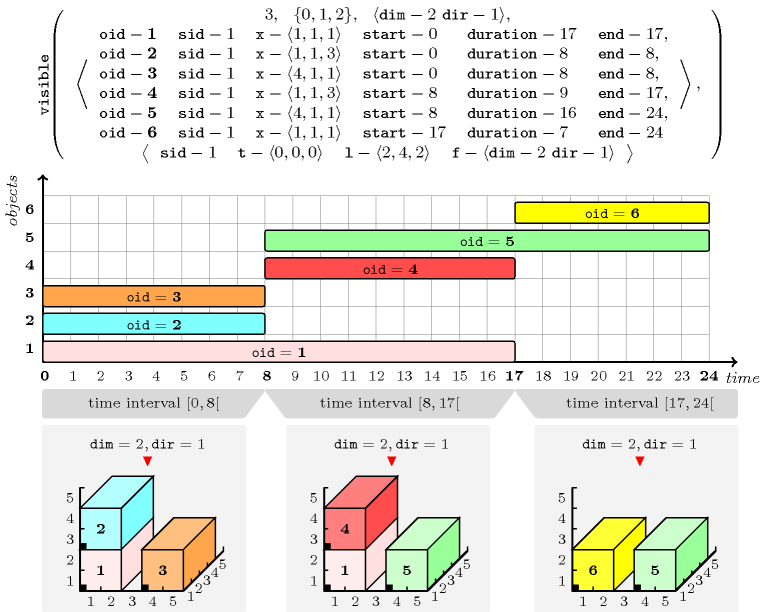
Figure 5.419.6 corresponds to a container loading/unloading problem in the context of a pick-up delivery problem where the loading/unloading takes place with respect to the front door of the container. Beside the constraint used for expressing non-overlapping, we use two distinct constraints:
The first constraint takes care of the location of the front door of the container (each object has to be loaded/unloaded without moving around any other object, i.e., objects that are in the vis-à-vis of according to the front door of the container). This is expressed by a single constraint for which the parameter mentions all three dimensions of the placement space and the parameter mentions the pair as its unique observation place.
The second constraint takes care of the gravity dimension (i.e., each object that has to be loaded should not be put under another object, and reciprocally each object that has to be unloaded should not be located under another object). This is expressed by the same constraint that was used for the ship loading problem, i.e., a constraint for which the parameter mentions all three dimensions of the placement space and the parameter mentions the pair as its unique observation place.
Figure 5.419.6. Illustration of the pick-up delivery problem
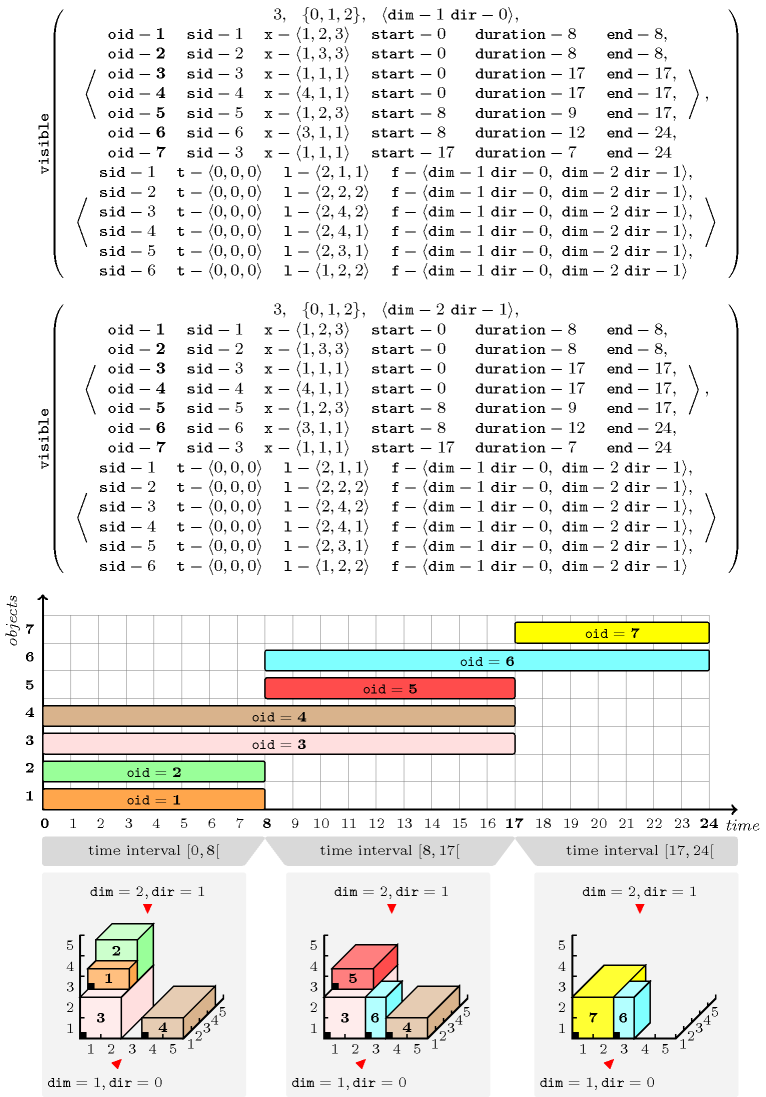
Figure 5.419.7 corresponds to a pallet loading problem where one has to place six objects on a pallet. Each object corresponds to a parallelepiped that has a bar code on one of its four sides (i.e., the sides that are different from the top and the bottom of the parallelepiped). If, for some reason, an object has no bar code then we simply remove it from the objects that will be passed to the constraint: this is for instance the case for the sixth object. In this context the constraint to enforce (beside the non-overlapping constraint between the parallelepipeds that are assigned to a same pallet) is the fact that the bar code of each object should be visible (i.e., visible from one of the four sides of the pallet). This is expressed by the constraint given in Part (F) of Figure 5.419.7.
Figure 5.419.7. Illustration of the pallet loading problem
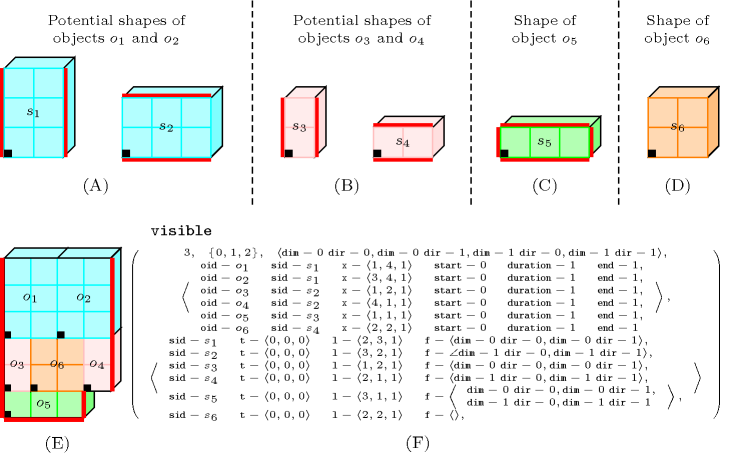
- Remark
The constraint is a generalisation of the constraint initially introduced in the context of the constraint.
- See also
common keyword: (geometrical constraint),
- Keywords